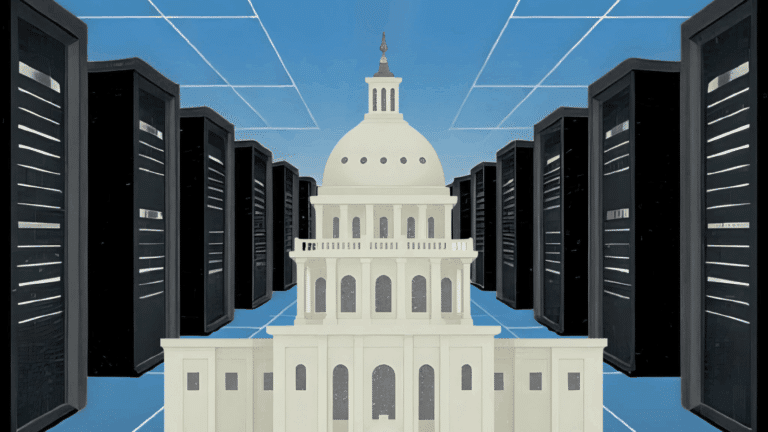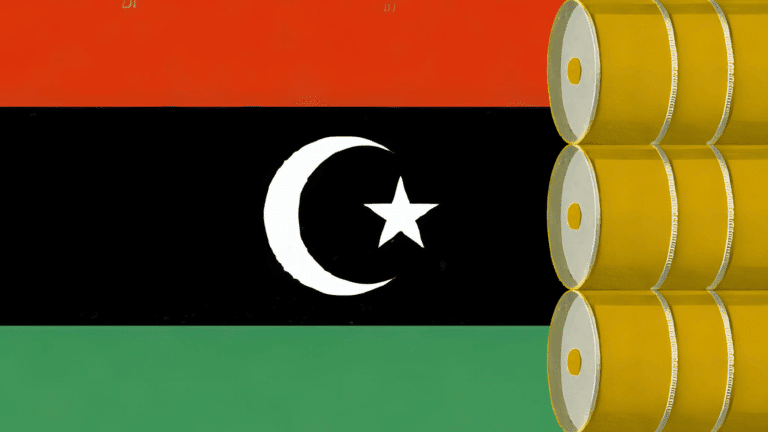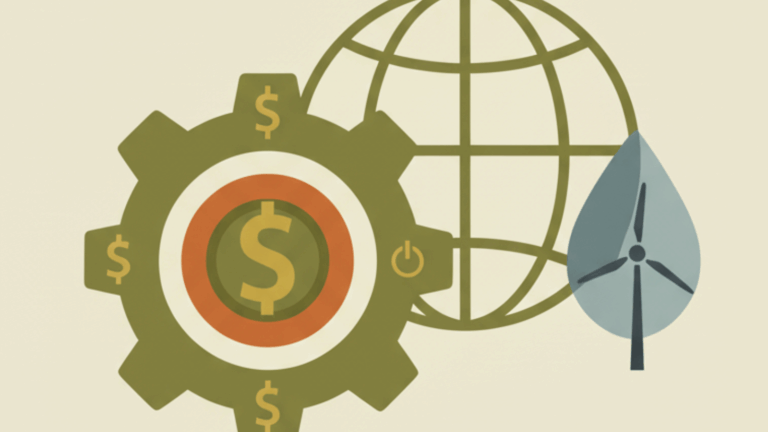Could a strategic lithium reserve kickstart US supply chain development?
NEW YORK -- A strategic lithium reserve is being mooted as a solution to stabilize volatile prices that have hindered American mining projects, allowi
Current Access Level “I” – ID Only: CUID holders, alumni, and approved guests only
Q&A by Harry Verhoeven • April 06, 2022
Russia’s invasion of Ukraine in February 2022 caused energy markets to go haywire. As oil and gas prices skyrocketed, nuclear facilities across Europe saw their lifespan extended and the international coal trade revived. The present crisis is shifting understandings of energy security at the core of the international system. Much attention has been paid to the fallout for European and North American economies. In this piece, Dr. Harry Verhoeven, Senior Research Scholar with the Center on Global Energy Policy, answers questions about the implications for the world’s least developed countries (LDCs), especially those related to financing energy imports, local energy transitions, and food security. The Russia-Ukraine conflict is causing considerable short-term instability and leading to soaring prices of wheat, fertilizer, and other commodities, while laying bare deeper problems that require sustained attention.
How is energy security linked to food security and other crises in LDCs?
The economies of most LDCs depend heavily on imports of oil and, less frequently, gas and coal. Historically, rising energy prices have generated balance of payments crises and debt accumulation among these countries. In the decade prior to the COVID-19 pandemic, debt-to-GDP ratios rose considerably,[1] and they have continued to rise since.[2] Soaring energy bills induced by the Russia-Ukraine conflict are therefore coming at a particularly sensitive macro-economic moment as indebtedness stands at a fifty-year high.[3] The International Monetary Fund and the World Bank are worried that the turmoil in energy markets and interest rate hikes in the US and Eurozone could cause an inflationary spiral and acute financial distress in LDCs. This is particularly concerning because debt and energy imports are directly connected to water, food, and climate in the world’s poorest states.[4]
The worsening climate predicament is highlighting the tradeoffs that exist between water, food, and energy security—growing instability in one can quickly imperil another. The 2022 assessment of the Intergovernmental Panel on Climate Change emphasized that the countries most vulnerable to climatic changes are often LDCs,[5] as currently illustrated by the record-breaking drought in Ethiopia, Kenya, and Somalia and increasingly deadly tropical cyclones in Madagascar, Malawi, and Mozambique.[6] Most LDCs are low-savings economies that struggle to connect their populations to the grid, feed them sufficiently, and improve agricultural productivity, all of which are essential to bolstering their resilience to global warming. Increasing the amount of energy and water used in agriculture could, all other things being equal, help boost production per acre, but is typically costly and often simultaneously exacerbates water or energy shortages. For instance, arid states could double down on desalination plants to increase freshwater availability, but the bill for running such installations is frequently prohibitive if the energy must be imported.[7] Similarly, retrieving groundwater to irrigate agricultural land not only risks depleting aquifers,[8] but also usually requires diesel pumps[9] for which imported fuel is an increasingly costly input. And while big dams might seem an ideal source of low-carbon, renewable energy at a time of dizzying oil and gas prices, they come with a colossal price tag, alter the chemistry of rivers, and block the natural replenishment of riparian lands with nutrients.[10] Moreover, growing climatological variability is ironically leading to energy outages and disruptions in agricultural production as reservoirs stand empty for months or threaten to overflow, crippling LDCs and affecting even more advanced economies such as Mexico, South Africa, and Venezuela.[11] Dilemmas over energy security induced by the Russia-Ukraine standoff thus cannot be approached in isolation from broader questions about climatic distress, water shortages, and the ability of hungry populations to feed themselves in LDCs.
Are turbulent global energy markets affecting energy transitions in LDCs?
For LDCs to respond to climatic changes effectively, they would need to prioritize at least three objectives: inclusive, participation-based adaptation to climate shocks; increasing aggregate energy consumption through low-carbon sources; and making clean, affordable energy more accessible.[12] As the Russia-Ukraine conflict sends energy prices soaring, the latter two objectives are suffering. With government budgets in Europe and North America now shifting towards increased military expenditure, Western support for energy transitions in LDCs will likely tank. The US Congress, for instance, greenlighted a meagre $1 billion for 2022.[13] This is especially disappointing in light of the enduring global failure to raise the $100 billion in climate finance[14] for low-income countries that has been promised since 2009; according to the most generous estimates,[15] assistance peaked in 2019 at around $80 billion, though civil society organizations suspect the real number is half that or less.[16] Moreover, a renewed focus on hydrocarbons in rich, industrialized economies is undercutting climate-mitigation efforts, which will make adaptation in the most vulnerable LDCs harder still.[17]
A handful of LDCs are hoping that soaring oil and gas prices will mean that stalled investments in hydrocarbons will resume: Mozambique has long trumpeted its potential as a world-class gas producer[18][19][20] Yet most LDCs are net importers of energy and face balance of payment problems that challenge the imperative of climate-resilient adaptation and energy transitions.
There is another potential outcome of the Russia-Ukraine crisis that has been much less discussed. Western investors have started pulling capital out of Russia, indicating that meaningfully pursuing Environmental, Social, and Governance (ESG) objectives is incompatible with doing business in or lending money to Russia. For LDCs, this renewed attention to ESG is a double-edged sword. On the one hand, it could spell greater interest in decarbonization and adaptation initiatives in the Global South. But as investors reassess long-standing organizational practices outside the West and associated reputational risks, they will be even more skeptical of committing to controversial, difficult, or hard-to-monitor projects in LDCs, especially at a time when global interest rates are likely to rise. The tightening of ESG criteria to counter criticisms of greenwashing[21] might thus ironically lead to less money being available to ensure low-carbon energy access to the world’s poorest.
Are the Russia-Ukraine conflagration and soaring energy costs derailing efforts to end global hunger?
Uncertainty in energy markets over new supply and demand patterns is already raising the cost of producing food in LDCs. In addition, because Russia is the world’s largest provider of fertilizer and together with Ukraine produces circa one quarter of all wheat on the planet, the conflict between these two states has raised the prices of imported wheat and fertilizer, doubling them in states like Ethiopia.[22] Policy-makers have begun speaking of a “global food crisis,”[23] and the need to ensure international trade continues with the least possible interruptions in the form of export bans and speculative hoarding.[24] Yet while trade disruptions should not be underestimated, from the standpoint of beleaguered populations in LDCs a food crisis is not around the corner but well underway.
Since 2014, the number of undernourished people globally has been increasing by more than 10 million annually.[25] Even before COVID-19, close to 700 million humans were unable to acquire enough food to meet the daily minimum dietary energy requirements; the pandemic pushed more than 120 million additional people into situations where hunger could kill them in the near future.[26] This despite record levels of total world food production.[27]
The discrepancy between rising supply and growing hunger underlines the fact that increased global production is not the answer and that today’s geopolitics of energy are not causing the crisis but merely amplifying it. Decades of donors and international financial institutions pushing the increased integration of the Global South into global financial systems and commodity trades[28] has generated ambivalent—and often outright disempowering—results,[29] especially for the poorest within these states. The close imbrication of carbon in the global political economy has led to rising energy production but also deepened hunger: LDCs such as Angola, Chad, South Sudan, and Sudan that have become hydrocarbon producers for international markets have increasingly come to rely on a combination of “emergency” food aid and the importation of cheap wheat and other staples from international markets, despite their rich traditions of cultivating local food grains. This transition has directly contributed to the neglect of local agricultural producers and the destabilization of consumption patterns. In rural areas and growing slums, it has also rendered millions of citizens increasingly hungry and vulnerable to food and energy price shocks. Most of these people are women, who are still the main producers of crops in most LDCs yet are most susceptible to water, energy, and food insecurity,[30] whether induced by climate, conflict, or geopolitical turbulence.
Notes
[1] Brahima Sangafowa Coulibaly, Dhruv Gandhi, and Lemma Senbet, “Is Sub-Saharan Africa Facing Another Systemic Sovereign Debt Crisis?,” Brookings, April 3, 2019, https://www.brookings.edu/research/is-sub-saharan-africa-facing-another-systemic-sovereign-debt-crisis/.
[2] Iolanda Fresnillo, “G20 Buries Its Head in the Sand Amidst Increasing Calls for Action on Sovereign Debt,” Eurodad, February 24, 2022, https://www.eurodad.org/calls_for_action_on_sovereign_debt.
[3] Marcello Estevão, “Are We Ready for the Coming Spate of Debt Crises?,” World Bank Blogs, March 28, 2022, https://blogs.worldbank.org/voices/are-we-ready-coming-spate-debt-crises.
[4] Jeremy J. Schmidt and Nathanial Matthews, “From State to System: Financialization and the Water-Energy-Food-Climate Nexus,” Geoforum 91 (2018): 151–59.
[5] Intergovernmental Panel on Climate Change, “Climate Change 2022: Impacts, Adaptation and Vulnerability,” 2022, https://www.ipcc.ch/report/ar6/wg2/downloads/report/IPCC_AR6_WGII_FinalDraft_FullReport.pdf.
[6] United Nations Environment Programme, “On Verge of Record Drought, East Africa Grapples with New Climate Normal,” news release, March 28, 2022, https://reliefweb.int/report/djibouti/verge-record-drought-east-africa-grapples-new-climate-normalFloodlist, February 14, 2022, https://floodlist.com/africa/madagascar-death-cyclone-batsirai-update-february-2022.
[7] Bekele Debele Negewo, ed., Renewable Energy Desalination: An Emerging Solution to Close the Water Gap in the Middle East and North Africa (Washington, DC: World Bank Publications, 2012).
[8] Swarup Dangar, Akarsh Asoka, and Vimal Mishra, “Causes and Implications of Groundwater Depletion in India: A Review,” Journal of Hydrology 596 (2021): 126103. https://doi.org/10.1016/j.jhydrol.2021.126103.
[9] Hua Xie, Claudia Ringler, and Md Alam Hossain Mondal, “Solar or Diesel: A Comparison of Costs for Groundwater‐Fed Irrigation in Sub‐Saharan Africa under Two Energy Solutions,” Earth’s Future 9 (2021): e2020EF001611. https://doi.org/10.1029/2020EF001611.
[10] Hesham Abd-El Monsef, Scot E. Smith, and Kamal Darwish, “Impacts of the Aswan High Dam after 50 Years,” Water Resources Management 29 (2015): 1873–85, https://link.springer.com/article/10.1007/s11269-015-0916-z.
[11] Christian Griot, “Mexico’s Drought Spreads and Could Wipe Out Agricultural Production within Weeks,” Atalayar, May 2, 20221, https://atalayar.com/en/content/mexicos-drought-spreads-and-could-wipe-out-agricultural-production-within-weeks%C2%A0Science of the Total Environment (2021): 799,149505. https://doi.org/10.1016/j.scitotenv.2021.149505https://climateandsecurity.org/2019/02/drought-mismanagement-and-political-instability-in-venezuela/.
[12] Harry Verhoeven, “Climate & Water in a Changing Africa: Uncertainty, Adaptation & the Social Construction of Fragile Environments,” Dædalus 150 (2021): 260–77.
[13] Somini Sengupta, “The U.S. Has Made Big Promises. Where’s the Money?,” New York Times, March 15, 2022, https://www.nytimes.com/2022/03/15/climate/united-states-climate-pledges.html?campaign_id=54&emc=edit_clim_20220329&instance_id=57033&nl=climate-forward®i_id=21652807&searchResultPosition=4&segment_id=86896&te=1&user_id=835f70dff1f87070653a87391c605c5e.
[14] United Nations Climate Change, “Climate Finance in the Negotiations,” https://unfccc.int/topics/climate-finance/the-big-picture/climate-finance-in-the-negotiations.
[15] Organisation for Economic Cooperation and Development, “Statement from OECD Secretary-General Mathias Cormann on Climate Finance in 2019,” news release, September 17, 2021, https://www.oecd.org/newsroom/statement-from-oecd-secretary-general-mathias-cormann-on-climate-finance-in-2019.htm.
[16] Oxfam, “Climate Finance Shadow Report 2020,” October 2020, https://oxfamilibrary.openrepository.com/bitstream/handle/10546/621066/bp-climate-finance-shadow-report-2020-201020-en.pdf.
[17] Harry Verhoeven, “Africa’s Call for Climate Change Adaption: Heeding Warnings from the IPCC Report in Advance of COP26,” Center on Global Energy Policy, September 14, 2021, https://www.energypolicy.columbia.edu/research/interview/africa-s-call-climate-change-adaption-heeding-warnings-ipcc-report-advance-cop26-qa-dr-harry.
[18] Total Energies, “About the Mozambique Liquefied Natural Gas Project,” https://mzlng.totalenergies.co.mz/en/about-mozambique-liquefied-natural-gas-project.
[19] Miguel Artacho, “Senegal Gears Up to Become a Major Gas Producing Country,” Energy Capital & Power, October 15, 2021, https://energycapitalandpower.africa-newsroom.com/press/senegal-gears-up-to-become-a-major-gas-producing-country-in-msgbc-region-by-miguel-artacho?lang=en.
[20] Jevans Nyabiage, “Angola Looks at Refinancing Debt as It Faces Higher Repayments on Chinese Loans,” South China Morning Post, March 11, 2022, https://www.scmp.com/news/china/diplomacy/article/3170020/angola-looks-refinancing-debt-it-faces-higher-repayments.
[21] Meredith Fowlie, “Climate Finance: The Loopholes That Are Causing Greenwashing,” Energy Post, November 4, 2021, https://energypost.eu/climate-finance-the-loopholes-that-are-causing-greenwashing/.
[22] Selamawit Mengesha, “Local Price of Fertilizer Sees 200% Hike,” The Reporter Ethiopia, March 26, 2022, https://www.thereporterethiopia.com/article/local-price-fertilizer-sees-200-price-hike-0.
[23] Edith Lederer, “The War in Ukraine Is Creating the Greatest Global Food Crisis Since WWII, the U.N. Says,” Time, March 30, 2022, https://time.com/6162598/ukraine-war-food-shortage/.
[24] Alan Beattie, “Export Controls Risk Exacerbating Food Crisis, WTO Chief Warns,” Financial Times, March 27, 2022, https://www.ft.com/content/4bcb5b9a-dc9c-4a2e-9c19-fd0552eb9975?emailId=62418ae628c1c3002330a32d&segmentId=2785c52b-1c00-edaa-29be-7452cf90b5a2.
[25] Food and Agricultural Organization, “Food Security and Nutrition around the World in 2020,” https://www.fao.org/3/ca9692en/online/ca9692en.html#chapter-1_1.
[26]World Food Programme, “WFP Global Operational Response Plan 2021. Update 2,” June 2021, https://docs.wfp.org/api/documents/WFP-0000129022/download/?_ga=2.212633428.1908339400.1624214515-1052469607.1623686526.
[27] Food and Agricultural Organization, “FAO Statistical Yearbook 2021 – World Food and Agriculture,” November 2, 2021, https://reliefweb.int/report/world/fao-statistical-yearbook-2021-world-food-and-agriculture.
[28] Bruno Bonizzi, “Financialization in Developing and Emerging Countries: A Survey,” International Journal of Political Economy 42 (2013): 83–107; Gustavo Oliveira and Susanna Hecht, “Sacred Groves, Sacrifice Zones and Soy Production: Globalization, Intensification and Neo-Nature in South America,” The Journal of Peasant Studies 43 (2016): 251–85.
[29] Jennifer Clapp and William G. Moseley, “This Food Crisis Is Different: COVID-19 and the Fragility of the Neoliberal Food Security Order,” The Journal of Peasant Studies 47 (2020): 1393–417.
[30] Fatma Denton, “Climate Change Vulnerability, Impacts, and Adaptation: Why Does Gender Matter?,” Gender & Development 10 (2002): 10–20; Anne Jerneck, “What about Gender in Climate Change? Twelve Feminist Lessons from Development,” Sustainability 10 (2018): 627, https://doi.org/10.3390/su10030627.
From the east to west and north to south, in red states and blue states, attention to data centers is skyrocketing in state capitals across the United States.

Libya's bid round for new oil and gas exploration and production highlights its potential revival as a major oil producer.

Economic, political, and fiscal realities have shifted energy policy priorities across the globe toward the goals of affordability and competitiveness.

Full report
Q&A by Harry Verhoeven • April 06, 2022